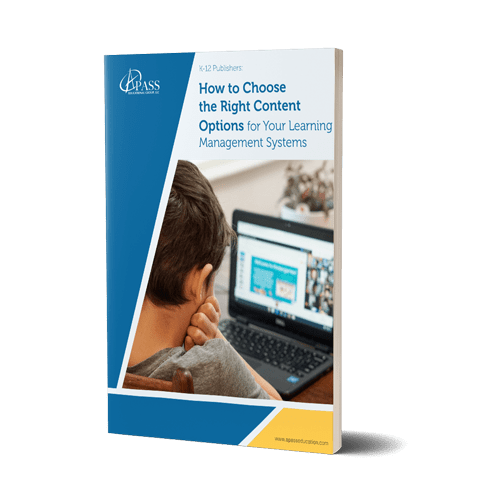Educators work hard to keep students engaged and excited about learning. Publishing leaders help teachers and students grow and learn together as one class—no matter their physical location – with remote-ready products. Likewise, leaders urge their content teams to create products that transition seamlessly between in-person and remote classrooms. Leaders utilize these five strategies to leverage the pros of hybrid learning.
Strive For Consistency for Hybrid Learning
So, consistent structures help students. Likewise, students moving between digital and in-person classrooms make it hard to ensure consistency of materials, content, and resources. Yet, publishers support teachers with materials that give students consistent routines, resources, and activities. Give educators daily agendas, learning goals, and lesson objectives. Simple tools like these let students know where they are on their learning journey – no matter their physical location. For example, publishers share online agendas that encourage teachers to make students work simultaneously in virtual notebooks. Plans, objectives, assignments, and other resources exist as digital resources that enable hybrid learning.
Hybrid Learning Offer Tools to Build Community
Likewise, digital tools help teachers build culture and community in their classes. Educators need support in mitigating the “us” vs. “them” mentality between remote and in-person students. Publishers can nurture a “we” dynamic in their hybrid learning products. Content creators craft lessons which partner in-person and remote students in groups. Also, give students opportunities to connect with peers. Besides that, instructional designers structure online classrooms by creating routines such as classroom jobs. For example, students can apply to be morning greeters, chat monitors, or technical assistants regardless of their physical location. These features help educators make and maintain one community. Still, the digital tools must work.
Offer Multimodal Learning
Yes, gamification and other strategic digital resources keep students involved in the community. But hybrid learning environments engage students, teachers, and parents. So, offer districts a structure for creating and maintaining these hybrid learning environments. Content authors use various instructional methods. A classroom focus tends to rely on synchronous and analog instruction. Lead ID teams build learning experiences where students engage as a whole group and in virtual breakout groups. For example, students in Saint Joseph, Michigan, are given the option of independent projects that can extend beyond the school day – such as a Tech Fest digital project of their choice. Also, students can choose between “Go Time,” which lets them select an enrichment activity, teacher help, or quiet reading time.
Provide Self-Directed Opportunities for Hybrid Learning
Publishers need to leverage the skills students developed during the pandemic time of self-directed learning. Students can navigate self-paced lessons and personalized pathways hybrid learning presents. Besides that, students and parents expect these features. Content creation teams can curate playlists, choice boards, and gamification badges to engage students. Still, student-led learning is the key. When students choose to learn what, when, and how – they succeed. Besides that, students soon show mastery of the content. They take ownership, dive deeper into the content, and illustrate their self-direction skills from remote learning.
Be Remote-Friendly
Still, project-based learning (PBL) and performance-based assessment continue to increase. These learning models gracefully address many problems educators face in traditional and synchronous classrooms. Yet, the publishers’ ID teams face the lofty challenges of designing suitable activities that are remote-friendly for hybrid learning. So, give educators need remote-friendly assessment and pulse check tools. Also, build remote-friendly tools that let teachers assess in-person and remote learners simultaneously in an equitable way.
In sum, publishers should continue to plan for remote learning because it offers educators consistent accessibility and flexibility. Still, all of these great tools fall flat if districts don’t know how to use them. Publishers must reach beyond traditional audiences to create hybrid learning.





